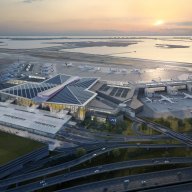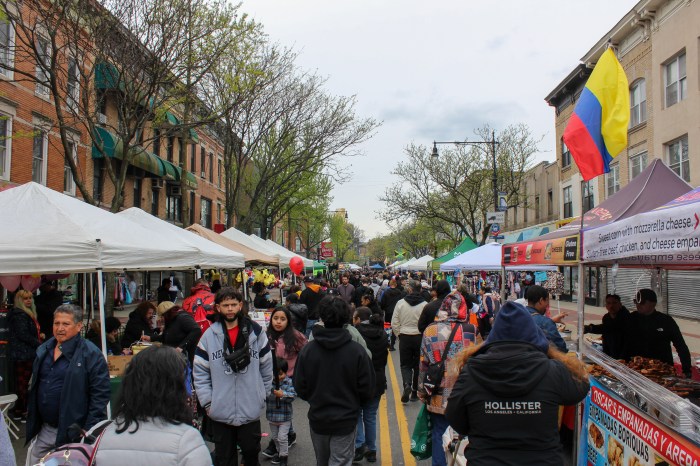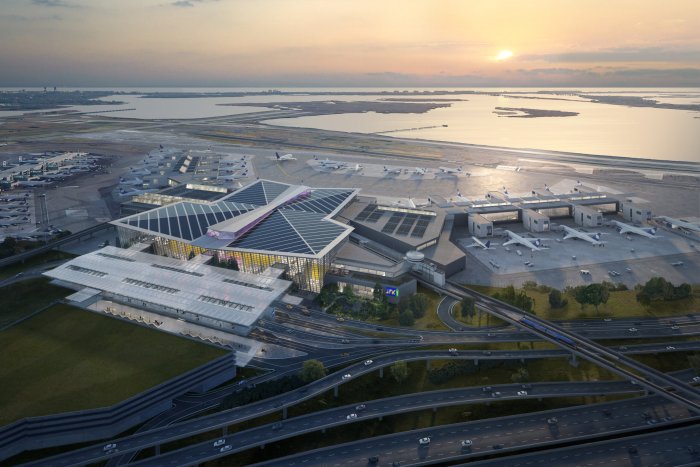By Kenneth Kowald
When it crosses Flatbush Avenue, the avenue changes. But there are increasing signs, at least in the area close to the downtown hub of Brooklyn, that Atlantic Avenue is becoming increasingly desirable.
For example, the Times Plaza Control House, the wonderful subway entrance – now on the National Register of Historic Places – is being been lovingly renovated and is a jewel at the intersection of Flatbush, Atlantic and Fourth avenues. An interesting side note is that the subway entrance was designed in 1908 by Heins and LaFarge, the architects for the Cathedral Church of St. John the Divine on Morningside Heights.
And on this corner plot and for several blocks along Atlantic Avenue, the Brooklyn Nets may have a new home and there may be a great deal of residential and retail building. But if all the plans come to pass as proposed, many people who have helped to bring up the adjacent properties will be ousted. This is not a done deal by any means. Stay tuned.
I have special memories of the area near the Long Island Rail Road station because that is where I had my first job, after high school, when I was a full-time evening student at CCNY. I can assure you, much has changed – and for the better.
After this section, not far east of Flatbush Avenue, Atlantic Avenue becomes a nondescript jumble until it reaches Queens at Elderts Lane, some 9 miles later. Unfortunately, the jumble continues into our fair borough and that is what I want to write about: Increased greenery would spruce up Atlantic Avenue in Queens.
Certainly one of the things that can be done for this very wide thoroughfare is to brighten it with greenery. There is some, but it is too little and not in the best of shape in many cases.
Let's look at what's available as we go from the Brooklyn border to the Van Wyck Expressway:
There are some street trees that appear to be in decent condition, but many more would be welcome since the architectural landscape of this wide boulevard is not very exhilarating. In many places it is downright depressing.
There are no plantings on the wide medians along the avenue. From Rockaway to Lefferts boulevards the medians are 1-foot high, over the Long Island Rail Road tracks, and tree planting may not be possible. But how about bushes in planters on this long stretch to break up the gray look?
And what about those medians that are at surface level? Surely trees could be planted here, as could shrubs and bushes. The Department of Parks and Recreation's GreenStreets program should get to work.
The first sign of official greening on Atlantic Avenue in Queens is a very fine GreenStreets triangle on the south side of the Rockaway Boulevard intersection. All the Parks Department's greening is on the south side of Atlantic Avenue.
From 88th to 89th streets, from the avenue to 95th Avenue, is the London Planetree Playground. I have found no information about this location on the Parks Department's Web site, but the area seems well-kept and has some newish playground furniture. There are, indeed, many London planetrees in and around the playground and where new trees are needed, this same species has been planted.
What is missing here and at the other following three sites are those fine Parks Department signs that tell you about the place. It is always good to know why something has a particular name and the history of the location.
The Maurice A. FitzGerald Playground is little more than an acre in size and begins just east of 104th Street, extends to 106th Street (105th Street doesn't cut through at this point) and goes back to 94th Avenue. It is named for the Ozone Park resident who was an elected and appointed official and died in 1951, when he was Queens borough president.
A stone in the pavement at the 94th Avenue entrance notes that this 1951 facility was renovated in 1999. The playground appears to be in quite good shape and has a good deal of greening and shrubs.
The next park was established in 1944 and was named Lt. Frank McConnell Park in 1964 to honor the first Richmond Hill resident killed in World War I. It runs from Lefferts Boulevard to 120th Street and back to 94th Avenue.
It is quite small, perhaps one-fifth of an acre, and has benches and many pin oaks but no other greenery. On a hot spring or summer day – despite the trees – the place looks dry, dusty and dull. Shrubs and bushes would help, as would a sign. The only one I saw was high on a lamppost on 120th Street.
There is a Morris Park World War I memorial and a plaque the Veterans of Foreign Wars erected in 1973 to honor veterans from the Spanish War through Vietnam.
Finally there is Smokey Oval Park, which is almost 4 1/2 acres between 126th and 127th Streets and runs back to 95th Avenue. The property for the park was acquired by condemnation in 1938 and the ballfields area was acquired and incorporated into the parkland in 1988.
In front of the comfort station a plaque notes that this playground was one of hundreds of parks and playgrounds established during the time of Parks Commissioner Robert Moses (1934-1960). This is a heavily used facility and it appears to be in generally good and up-to-date shape. Clearly, it is a much-needed and valued amenity in the community.
From here on, going east, all is concrete, asphalt and weeds along Atlantic Avenue.
Surely we can do better. Certainly we should. But will we?
The TimesLedger Newspapers reported earlier this year that Community Board 9 in Richmond Hill has begun to campaign for greening of the concrete medians. That is good news.
Let us hope – because greening is needed.

































